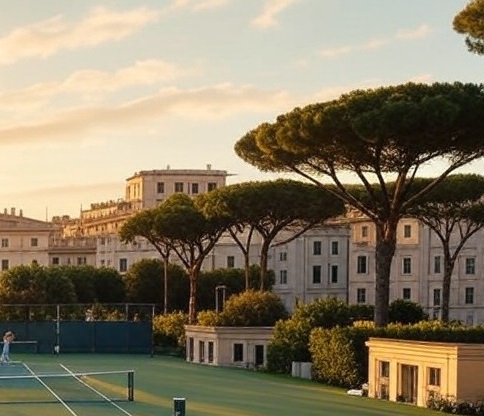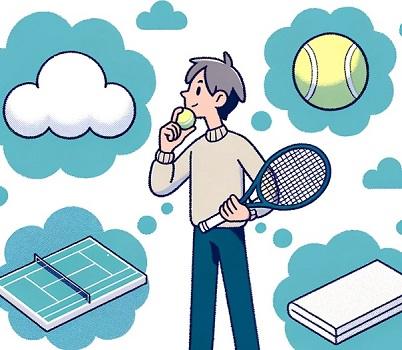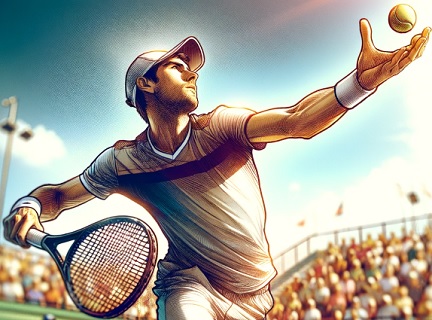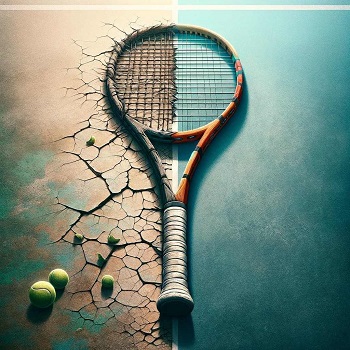Les clubs de tennis de Rome

Rome, avec ses vestiges antiques et ses monuments majestueux, n’est pas seulement un berceau de l’histoire, mais aussi un terrain fertile pour les passionnés de tennis. Dans cette ville où le passé et le présent se mêlent, les clubs de tennis offrent des espaces où la culture du jeu se développe, où chaque coup résonne avec l’écho des siècles. Voici une présentation des clubs de tennis de Rome, depuis les plus vastes jusqu’aux plus intimes, chacun avec ses propres caractéristiques et son histoire particulière.
Sur une centaine de courts environ, la grande majorité des courts sont en terre battue. en terre battue : 75 (environ 89%) et 9 courts en dur.
Annonces partenaires de tennis Italie
Circolo Tennis Parioli
Situé dans l’un des quartiers les plus élégants de Rome, le Circolo Tennis Parioli est un lieu où l’aristocratie du tennis se rencontre.
- Adresse: Viale Tiziano, 74, 00196 Roma
- Nombre de courts: 12
- Surface des courts: 8 en terre battue, 4 en dur
- Nombre d’adhérents: Environ 1,500 membres
Circolo Canottieri Aniene
Ce club, connu pour ses installations sportives de haut niveau, se niche le long du fleuve Tibre, offrant une vue imprenable tout en étant le théâtre de compétitions de tennis de premier ordre.
- Adresse: Lungotevere dell’Acqua Acetosa, 119, 00197 Roma
- Nombre de courts: 9
- Surface des courts: 7 en terre battue, 2 en dur
- Nombre d’adhérents: Environ 1,200 membres
Circolo Tennis Roma
Dans le cœur de la capitale, près du Foro Italico, le Circolo Tennis Roma est une institution où le tennis se joue avec passion et tradition.
- Adresse: Via del Foro Italico, 1, 00194 Roma
- Nombre de courts: 8
- Surface des courts: Tous en terre battue
- Nombre d’adhérents: Environ 1,000 membres
Circolo Tennis Monte Mario
Perché sur une colline offrant une vue panoramique sur Rome, ce club est un havre de paix pour les amateurs de tennis cherchant à s’échapper de l’agitation urbaine.
- Adresse: Via G. Saragat, 98, 00136 Roma
- Nombre de courts: 6
- Surface des courts: 5 en terre battue, 1 en dur
- Nombre d’adhérents: Environ 800 membres
Garden Tennis Club
Un espace verdoyant au milieu de la ville, le Garden Tennis Club est un endroit où la verdure et le sport se conjuguent harmonieusement.
- Adresse: Viale Mazzini, 61, 00195 Roma
- Nombre de courts: 5
- Surface des courts: 4 en terre battue, 1 en dur
- Nombre d’adhérents: Environ 600 membres
Tennis Club Ambrosiano
Un club plus petit mais non moins charmant, l’Ambrosiano offre une ambiance familiale avec des installations bien entretenues.
- Adresse: Via Cassia, 1230, 00123 Roma
- Nombre de courts: 3
- Surface des courts: Tous en terre battue
- Nombre d’adhérents: Environ 300 membres
Tennis Club Lanciani
Connu pour son ambiance accueillante et ses installations bien entretenues, le Tennis Club Lanciani est un lieu où le tennis se vit au quotidien.
- Adresse: Via Pietro Cossa, 41, 00193 Roma
- Nombre de courts: 10
- Surface des courts: 9 en terre battue, 1 en dur
- Nombre d’adhérents: Environ 1,100 membres
Tennis Club San Giorgio
Situé dans un cadre verdoyant, ce club combine tradition et modernité, offrant à ses membres un espace où le tennis est à la fois un sport et un style de vie.
Adresse: Via dei Prati Fiscali, 221, 00141 Roma
Nombre de courts: 7
Surface des courts: 6 en terre battue, 1 en dur
Nombre d’adhérents: Environ 900 membres
ASD Petit Tennis Club
Petit par le nom mais grand par l’esprit, ce club est parfait pour ceux qui cherchent une atmosphère plus intime pour pratiquer le tennis.
- Adresse: Via dell’ Acquedotto Paolo, 98, 00141 Roma
- Nombre de courts: 2
- Surface des courts: Tous en terre battue
- Nombre d’adhérents: Environ 200 membres
Tennis Club 4
Un club plus modeste mais avec des installations de qualité, où le tennis est pratiqué avec passion.
- Adresse: Viale, 00167 Roma
- Nombre de courts: 2
- Surface des courts: Tous en terre battue
- Nombre d’adhérents: Environ 150 membres
Santa Agnese Tennis Club
Un club qui offre une expérience de tennis dans un cadre historique, près du parc de la Villa Torlonia.
- Adresse: Piazza di S. Costanza, 00198 Roma
- Nombre de courts: 2
- Surface des courts: Tous en terre battue
- Nombre d’adhérents: Environ 100 membres
Nuovo Tuscolo Sporting Club
Ce club, niché à l’est de Rome, est un lieu où le tennis se marie avec d’autres sports pour offrir une expérience complète de bien-être.
- Adresse: Via della Batteria di Porta Furba, 29, 00159 Roma
- Nombre de courts: 4
- Surface des courts: Tous en terre battue
- Nombre d’adhérents: Environ 400 membres
Tennis Club Pro Roma
Un club qui se distingue par son engagement envers le développement du tennis à tous les niveaux, du débutant à l’expert.
- Adresse: Via Verrio Flacco, 3, 00177 Roma
- Nombre de courts: 6
- Surface des courts: Tous en terre battue
- Nombre d’adhérents: Environ 500 membres
Circolo Quo Vadis
Situé dans une zone plus tranquille de Rome, ce club offre un espace où le tennis peut être pratiqué dans une ambiance détendue.
- Adresse: Via della Caffarella, 00179 Roma
- Nombre de courts: 3
- Surface des courts: Tous en terre battue
- Nombre d’adhérents: Environ 300 membres
Gymnastics Society Roma
Bien que principalement connu pour la gymnastique, ce club inclut également des installations de tennis pour diversifier les activités sportives.
- Adresse: Viale del Muro Torto, 00195 Roma
- Nombre de courts: 2
- Surface des courts: Tous en terre battue
- Nombre d’adhérents: Environ 200 membres (pour le tennis)
Tennis Rome A.S.D.
Un club qui se concentre sur l’amour du jeu, offrant des services pour les joueurs de tous niveaux avec une atmosphère conviviale.
- Adresse: Via Ipponio, 00178 Roma
- Nombre de courts: 3
- Surface des courts: Tous en terre battue
- Nombre d’adhérents: Environ 250 membres
Ces clubs enrichissent la scène tennistique de Rome, offrant des lieux où la passion pour le sport et la culture se rencontrent, créant une communauté unie par l’amour du jeu. Chacun de ces clubs reflète une part de l’esprit romain, où le sport devient une extension de la vie culturelle et sociale de la ville, perpétuant une tradition qui remonte à l’époque où les Romains jouaient à des jeux de balle sur des terrains tout aussi sacrés que leurs temples.




